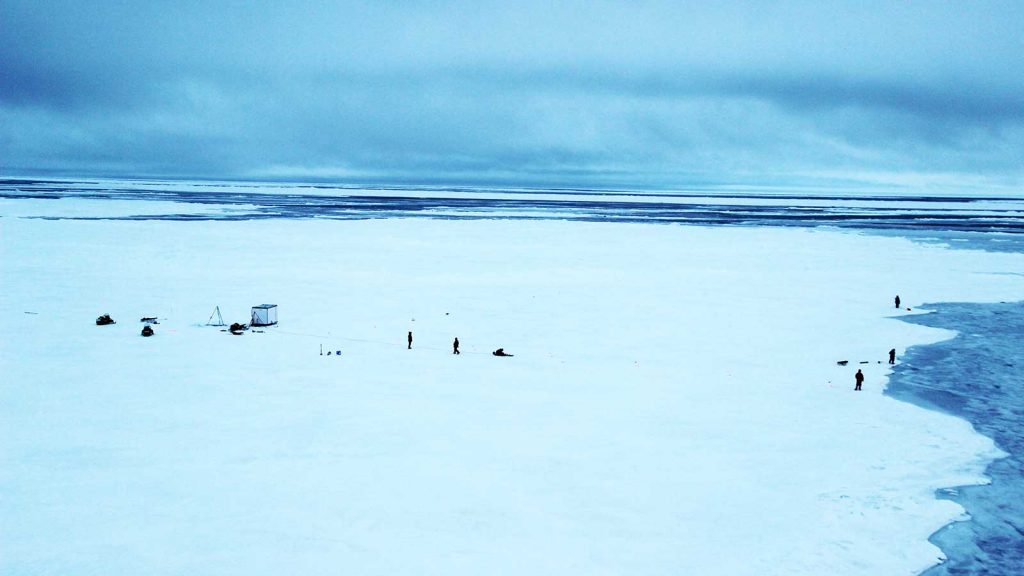
Not all our progress is in the water above the seafloor. As soon as I finished my CTD watch today, it was time for my polar bear watch as Kevin collected more cores from the ice camp. (photo by Chris German, Woods Hole Oceanographic Institution)
Things didn’t shake out as neatly as I had hoped they would over the weekend and I am doing my best not to accuse the Arctic Ocean, or Nature, of betraying me.
First, our first NUI engineering dive (which Mike and the team have to conduct to demonstrate that the vehicle is working properly before I can use it) had to be postponed until Monday. Then, yesterday (Sunday) the team had some technical problems during their “night before” pre-dive checks, which meant they had to ask that we push back the engineering dive back another day, so now we won’t begin to test NUI in the water until Tuesday and our first chance for a science dive won’t be until Thursday.
So be it. There’s no point rushing to use a vehicle that isn’t ready. That’s how bad things can happen, and then I wouldn’t get to use it at all for the rest of the cruise.
On the upside, we have other instruments on the ship to help us with our vent hunting. By Saturday afternoon, we were getting close to the ridge axis, so we turned in early after dinner and got up at 2:30 a.m. on Sunday to put the CTD in the water for our first “tow-yo“—a technique in which we raise and lower the chemical sensors in the water and take water samples along the way to see if we can “sniff” for any signs of venting.
The first trick the Arctic played on us, at around 3:00 a.m., was that although we had encountered unusually thin ice everywhere, we found a much larger, thicker ice floe waiting for us right over the summit of the seamount. So instead of towing our CTD and instrument package across the summit as we’d hoped, we had to anchor ourselves to the ice floe and let it take us where it wanted—which was on a course exactly 90 degrees to the direction we wanted to go.
No problem. We could out-think the ice.
So we pulled our gear out of the water, moved the ship, and started again along a different heading—one that passed right over the sites that Antje had identified as the best sampling targets over the seamount summit—and carried on, right through until lunchtime.
But there were no plume signals from the sensors that were sending data back to the ship in real time and, once we returned water samples back to the ship, Jill was unable to find chemical signs of vents, either. Even so, we were able to lower the ship’s OFOS camera system at the same location to photograph the seafloor and found an amazing amount of life on top of the seamount. There’s no evidence that any of it was linked to hydrothermal activity, but there’s a great deal living down there, nonetheless, and our colleagues from Germany spent the rest of the day and evening collecting samples from the water above the seafloor for their biological studies.
Then, overnight, it was time to finish mapping the seamount’s shape in detail so that, at 6:00 a.m. today, Maren, Janna, and I could look at the map hot off the printer and select a new route for another exploratory CTD cast. But today, we had less luck with our survey. Once again, the ice floe we anchored to made a course change and, after just 300 meters, we stopped completely.
There was no evidence for venting in the water we were able to survey, but because of the ice we didn’t really go where we wanted, either. This is a major reason we brought NUI here—so we have a vehicle that can go where WE want it to and not where the ice pushes the ship. We are planning another survey of the seafloor with the ship’s camera system tonight, but the really big news for tomorrow is that we plan our first NUI dive in the morning. Wish us luck!

